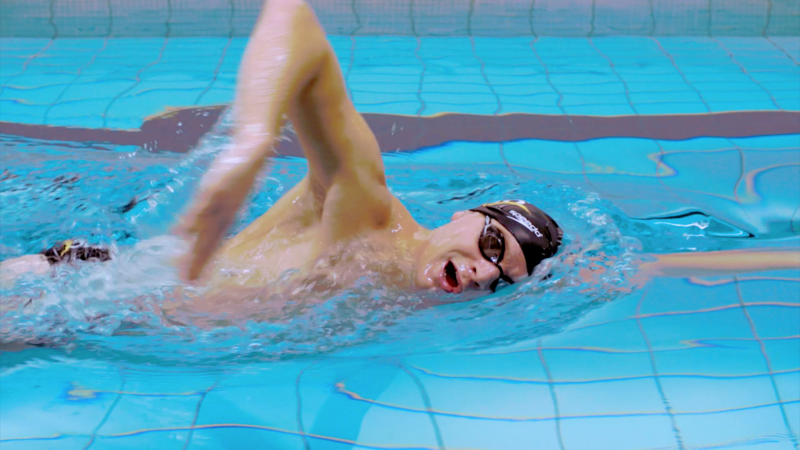Swimming blog - BREATHING HOW TO SWIM WITHOUT LOSING YOUR BREATH?
Breathing technique is for a lot of swimmers the biggest challenge. What is the secret to keeping your breathing relaxed while swimming? Breathe out when your face is in the water. There, we’ve spilled the beans and now you know how to swim for hours without losing your breath. But it’s not quite as simple as that. Part of the secret is to choose your breathing patterns wisely.
So how do top swimmers manage their breathing so well? The answer is quite simple: top swimmers adjust their breathing patterns according to the intensity or speed they are swimming with and are able to adjust their breathing patterns to preserve energy.
During competitions you see sprinters that don’t breathe at all over 50 meters while long distance swimmers breathe every second or third stroke. Over a short distance like a 50 meters, your muscles do not need as much oxygen to be able to deliver the necessary power. You finish before the body starts to fail on you due to a lack of oxygen.
Over longer distances your muscles need lots of oxygen in order to keep the body functioning and the muscles working properly. Therefore, the breathing pattern is adjusted to a ‘1-on-2’ (every second stroke) or ‘1-on-3 (every third stroke) breathing pattern. We see a lot of mid-distance swimmers apply a ‘1-on-4’ or ‘1-on-5’ breathing pattern.

So our advice is: adjust your breathing pattern to the speed or distance you are swimming. The ideal breathing pattern for most swimmers is breathing every third stroke. We call that bilateral breathing, which means you breathe to both sides every third stroke. Your stroke becomes more symmetrical and therefore more balanced and efficient. But a breathing pattern like this is not set in stone. As said, you need to adjust your breathing according to your speed, training intensity or to the demand of your lungs and muscles.
Aim for ‘1-on-3’ breathing when swimming longer distances, but if you run out of breath while doing that, breathe more often. A great solution is combining two breathing patterns. Combine a ‘1-on-3’ with the ‘1-on-2’ pattern, which still lets you breathe to both sides, but you’re able to get more air in, so your heart rate stays lower. Or when you feel out of breath after a flipturn, breathe a couple of ‘1-on-2’s’ before switching back to a ‘1-on-3’ breathing pattern.

Not switching up your breathing pattern and frequency in accordance to the needs of your swimming is a common mistake. Sticking to one breathing pattern when your body or your speed demands a different one is never a good idea. If you are sprinting a 25, there is no need to think about breathing, just swim. The longer you swim the more patterns you will need. Not being able to change patterns is what makes swimming so incredibly challenging. Yet, finding the right pattern or combination of patterns is very rewarding.
Try to find a set of breathing patterns that suits you best for different speeds and distances. Just make sure you don’t forget to exhale when your face is in the water. Or give our Breathing course a try :-)